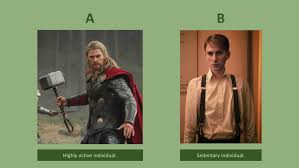You may have heard the saying “use it or lose it”. There is some truth in this statement and it encapsulates Wolff’s law, a rule that can describe how bone grows and changes over time, depending on the demands placed on that bone.
Wolff’s law was developed by a German anatomist and surgeon, Julius Wolff, who recognised that our skeleton is constantly changing. When stress is applied to our bones, they remodel themselves to adapt to that stress. According to Wolf’s law “bone is laid down where it is needed and resorbed where it is not.”
Our bones become thicker and stronger over time to resist forces placed upon them and thinner and weaker if there are no or less demands on that bone or forces acting against it.
It can be assumed that the bones in an arm of a person who is highly active, whose job or leisure may require lots of lifting and loading of the arm, will be thicker and stronger than those of a more sedentary individual.

While we are all in Australian Open mode, another example could also include the dominant verse non dominant arm of an elite tennis player. The bones in the dominant racquet holding arm will be placed under high stress and load compared to the other arm and therefore can become much stronger and thicker as a result.

Wolff’s law is an important concept to consider when it comes to injury recovery and/or injury prevention and the physical rehabilitation and exercise that is required to address bone health.
Controlled stress to our bones, in the form of exercise is crucial when it comes to bone healing and strengthening. This is especially important in the prevention and management of conditions such as osteoporosis and following a fracture.
For fractures to our hands, wrists or arms, a hand therapist will be able to guide you through a well rounded rehabilitation program, providing you with specific exercises at the appropriate time in order for best healing and strengthening.
